Explain the Cis and Trans End of a Golgi Body
Another theory the Cisternal maturation model says that the vesicle fuse together at the cis end and the macromolecules are pushed along as the vesicles continue to fuse. Functions of Golgi complex.
Can Someone Explain This Line The Golgi Cisternae Are Concentrically Arranged Near The Nucleus With Distinct Convex Cis Or The Forming Face And Concave Trans Or Maturing Face Quora
Major processing area allowing biochemical modifications.
. The stack of the Golgi complex has two definite regions cis and trans the end of the stack receiving the vesicles from ER is called the cis region whereas the opposite side of the stack facing the plasma membrane is the trans region Fig. Location of Golgi complex. Concave side of stack - maturing trans face.
Chloroplasts _____ found in plants and algae are the sites of photosynthesis Peroxisomes _____. Trans ____ golgi is the exporting end. The Golgi stacks are polarized.
The cis Golgi network CGN and the trans Golgi network TGN. Secretory materials reach the Golgi complex from Smooth Endoplasmic Reticulum SER by way of transport vesicles which bud off from SER and fuse with golgi cisternae on the cis face. The CGN is the first cisternal structure and the TGN is the final from which proteins are packaged into vesicles destined to lysosomes secretory vesicles or the cell surface.
Cisternae is a flattened disk-shaped stacked pouches that make up the Golgi apparatus. Faces the nucleus forms a connection with the endoplasmic reticulum and is the entry point into the Golgi apparatus. Cis ___ golgi is the receiving end.
Major processing area allowing biochemical modifications. The Golgi body comprises 5 to 8 cup-shaped series of compartments known as cisternae. The Golgi apparatus is part of the membrane system that also contains the ER.
Kornfeld and Kornfeld 1985. And trans-Golgi 84 proteins Supplemental Data Set 3. The cisternae of the Golgi apparatus is divided into 3 compartments these are Cis or cis face which is present near the endoplasmic reticulum Medial centre part of the cisternae and trans or trans face which is present near the plasma membrane.
The cis face is the end of this organelle where specific substances enter from the ER for processing. 15 Each Golgi stack has 2 faces or ends. Proteins enter the Golgi on the side facing the ER cis side and exit on the opposite side of the stack facing the plasma membrane of the cell trans side.
Vesicles enter from the cis face side of the Golgi pass into and through the sections of the Golgi and finally after being modified exit in a vesicle that buds off the trans face of the organelle. Golgi apparatus is one of the cell organelles. The Golgi apparatus is located close to the nucleus and can be very large in secretory cells where it fills almost the complete cytoplasm.
The vesicular transport theory says that the Golgi apparatus has two ends the cis and trans ends and macromolecules are passed on through membrane sections. Convex side of stack - forming cis face. The Golgi body or Golgi complex apparatus and Endoplasmic reticulum ER are both organelles found in the majority of eukaryotic.
Wang and Seemann 2011. Between the cis face and the trans face the Golgi apparatus is structurally polarised with three major compartments. Transport vesicles that pinch off from transitional ER merge with cis face of Golgi cistema and add its contents into the lumen.
Mitochondria _____ are the sites of cellular respiration a metabolic process that uses oxygen to generate ATP. The Golgi consists of several sacs or cisternae with an incoming section known as the cis face and an outgoing section known as the trans face. Each cistema has a forming or cis face cis.
16 Proteins enter the GA on the side facing the endoplasmic reticulum and exit on the other side of the stack. Trans face is the maturing face of the Golgi apparatus through which the modified proteins are released into the cytoplasm as the main function of Golgi apparatus is processpackage and transport of proteins. However 60 cisternae are found in some protists.
On the opposite side is the trans face. One idea is that a new cisterna forms at the cis end the end nearest the rough endoplasmic reticulum and then changes as it moves away from the RER becoming in time the trans end. Golgi bodies are usually located near endoplasmic reticulum.
This collection of cisternae is broken down into cis medial and trans compartments making up two main networks. A more accepted idea is that chemicals being processed in the Golgi apparatus travel from one cisterna to another in transport vesicles or possibly along microtubules. The membranes on the cis face are usually thinner than the others.
They receive proteins and lipids from the endoplasmic reticulum ER by the cis cisternae and export them from the trans cisternae and the trans-Golgi network TGN to other intracellular membranes such as the endosomes lysosomes plasma membrane and outside of the cell Tang and Wang 2013. A Golgi stack mostly contains 4 to 8 cisternae. Major processing area allowing biochemical modifications.
On the same side and maturing or trans face trAnswerthe opposite side. These faces are biochemically separate with each section having a distinct enzymatic composition. The key difference between Cis and Trans Face of Golgi Apparatus is that the Cis face of Golgi apparatus is the receiving side of the vesicles from the rough ER to the Golgi apparatus while the Trans Face of Golgi Apparatus is the shipping side of the vesicles filled with proteins from the Golgi apparatus to other places.
Cis face is theface of the Golgi apparatus through which proteins from the endoplasmic reticulum is often transferred to the Golgi apparatus for packaging. In the end this yielded compartment proteomes of the following sizes. From the trans face Secretory vesicles arises that carry the processed material to.
Golgi cisternae were not expected to differ sufficiently in density to be separable on a density gradient and LOPIT proteome maps were therefore not expected to reflect. To perform this function the Golgi vesicles contain different sets of enzymes in different types of vesicles cis middle and trans cisternaethat react with and modify secretory proteins passing through the Golgi lumen or membrane proteins and glycoproteins that are transiently in the Golgi membranes as they are en route to their final destinations. Density gradient fractionation and immunolocalization studies of the mammalian Golgi revealed that early-acting glycosylation enzymes tend to be concentrated in cisternae at the cis side of the stack while late-acting glycosylation enzymes are concentrated in cisternae at the trans side Dunphy and Rothman 1985.
It consists of stacked membrane-coated cavities called dictyosomes Fig.
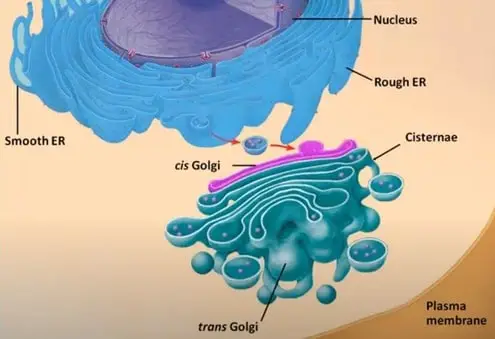
What Is The Golgi Apparatus Microscope Clarity
What Is The Difference Between Cis And Trans Face Of Golgi Apparatus Pediaa Com

Golgi Apparatus What Is It Where It Is What Is The Function And Important Facts Osmosis
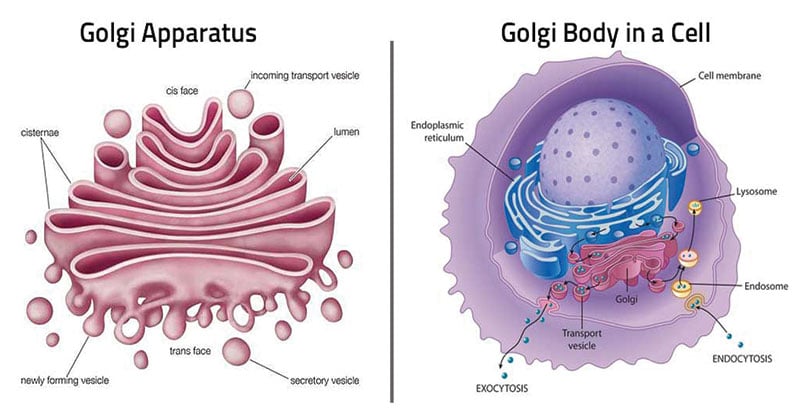
Golgi Apparatus Definition Structure Functions And Diagram
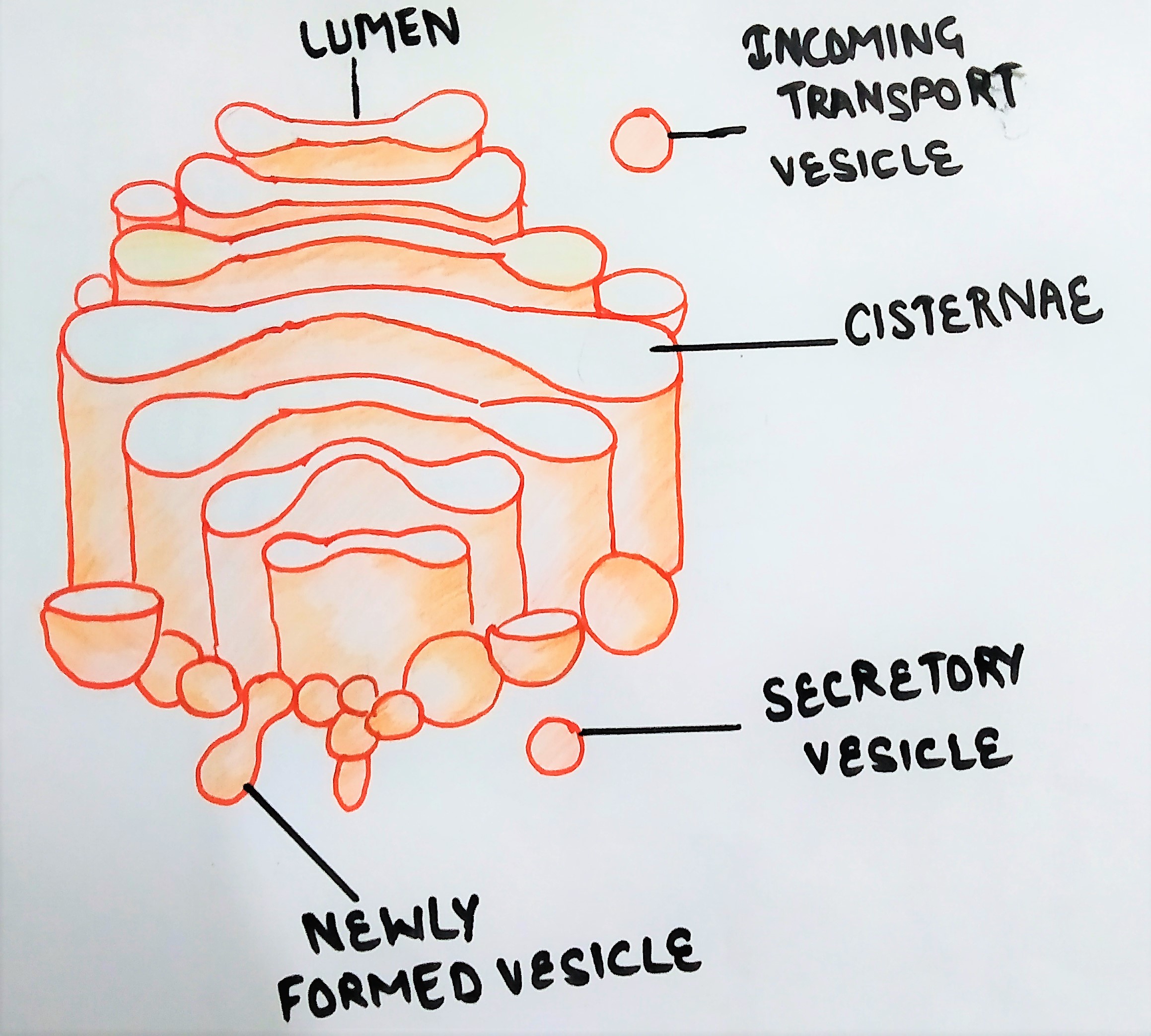
Golgi Complex And Its Role In Protein Secretion The Virtual Notebook
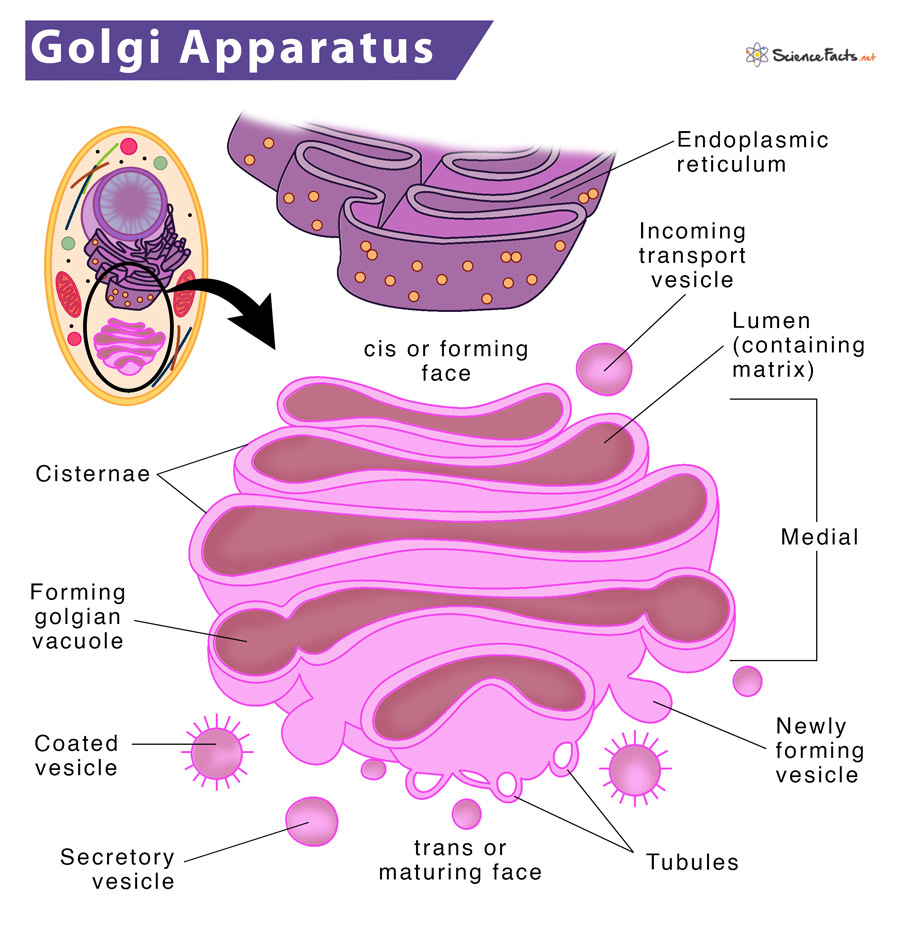
Golgi Apparatus Definition Location Structure Functions

What Are The Cis And Trans Phases Of The Golgi Apparatus Quora

Difference Between Cis And Trans Face Of Golgi Apparatus Compare The Difference Between Similar Terms

Difference Between Cis And Trans Face Of Golgi Apparatus Compare The Difference Between Similar Terms
What Is The Difference Between Cis And Trans Face Of Golgi Apparatus Pediaa Com
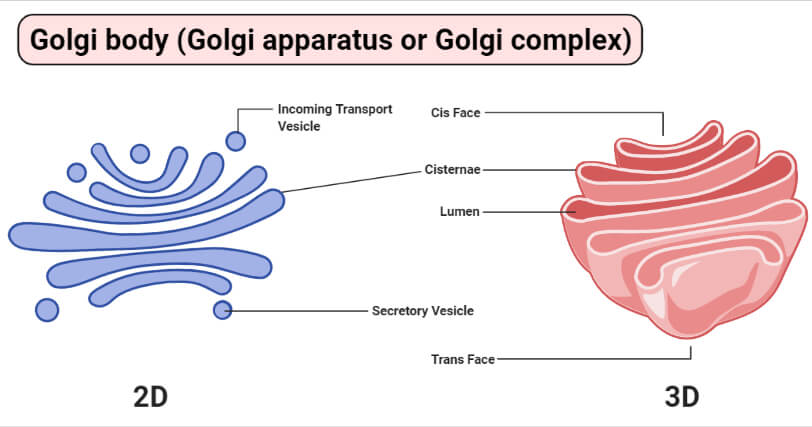
Golgi Body Golgi Apparatus Or Golgi Complex Properties Structure Functions
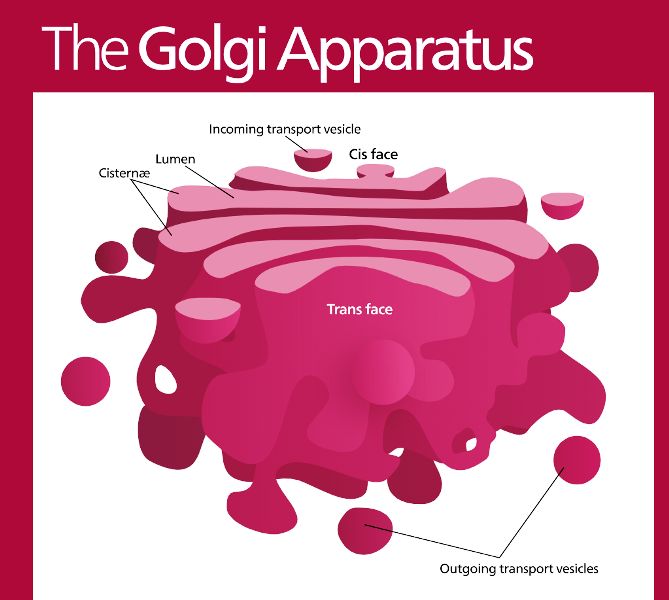
Golgi Apparatus Structure Functions And Diagram Studiousguy

The Cell 5 Vesicular Trafficking Golgi Apparatus Atlas Of Plant And Animal Histology

The Golgi Aparatus Flashcards Quizlet
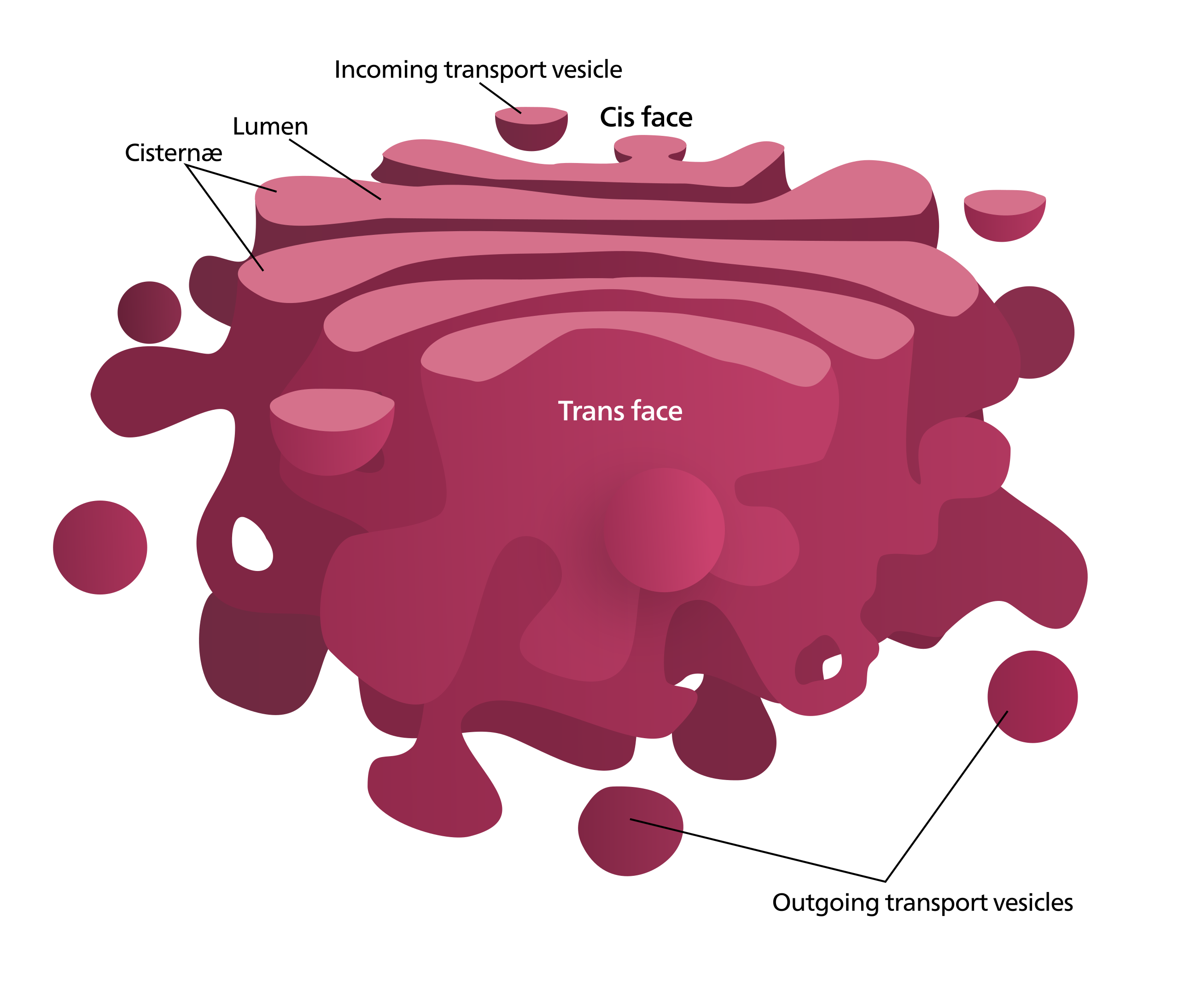
Golgi Apparatus Structure Function Teachmephysiology
What Is The Difference Between Cis And Trans Face Of Golgi Apparatus Pediaa Com

The Endoplasmic Reticulum And Golgi Body What S The Difference

Golgi Apparatus Definition Function And Structure Biology Dictionary
Comments
Post a Comment